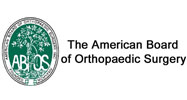What Causes Infraspinatus Pain and How Can You Treat It?
The infraspinatus muscle works alongside three other rotator cuff muscles to stabilize and move the shoulder. This triangular-shaped structure primarily externally rotates the arm. This means it rotates the arm toward the outside of the body. It also assists with moving the scapula (shoulder blade) when your shoulder joint is fixed (not moving). Occasionally, repetitive movements or other disorders can cause pain in this muscle.







